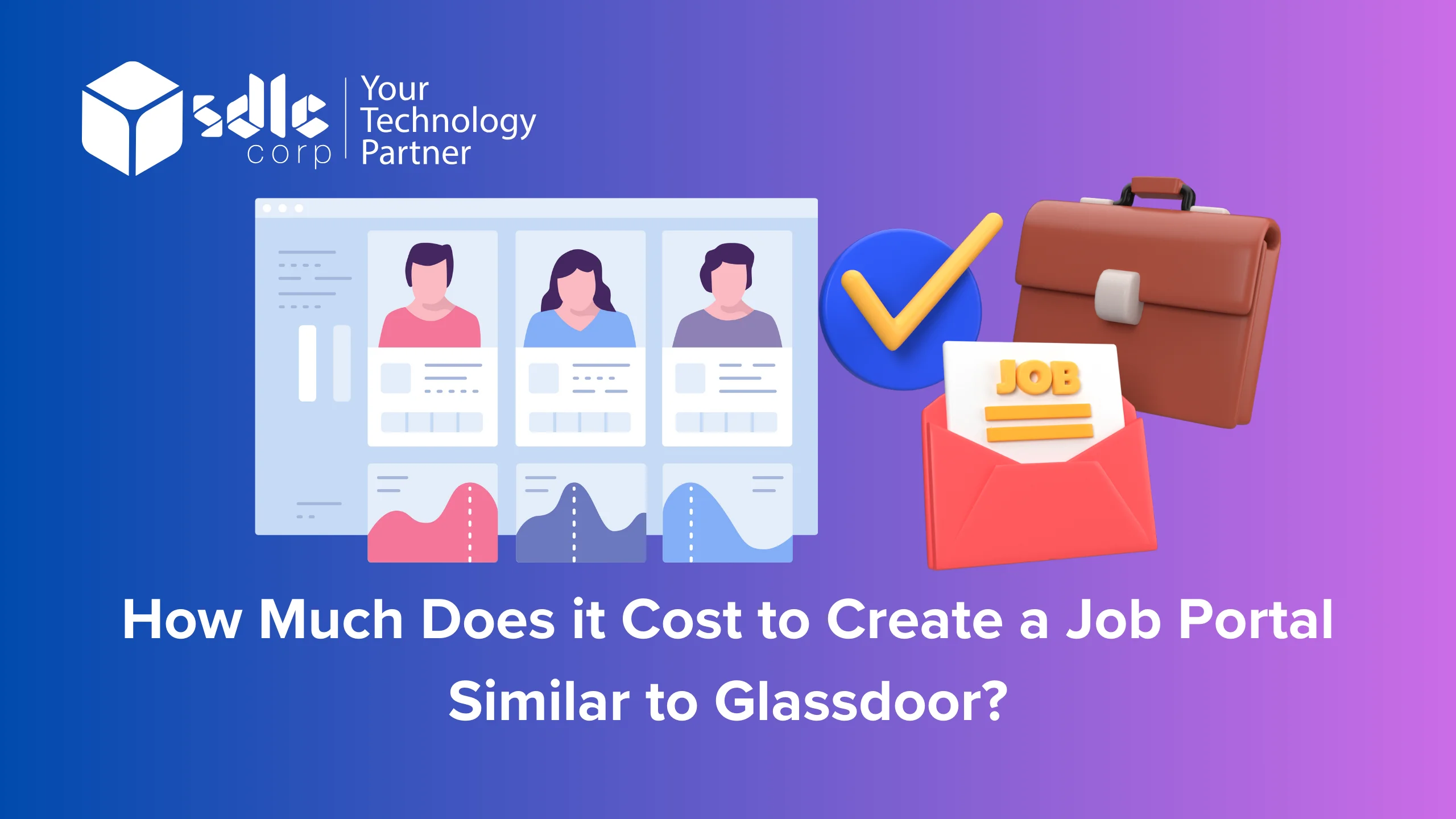How much does it cost to create a job portal similar to glassdoor?
Amidst the chaos and disruption caused by the COVID-19 pandemic, the recruiting industry underwent a paradigm shift. Countless organisations were compelled to cancel projects and close their doors, resulting in a global wave of employment losses. Searching for adequate work opportunities and pursuing top talent has emerged as one of our time’s most important challenges.
Fortunately, online job portals such as Glassdoor have arisen as a light of hope, revolutionizing the recruitment and job search process. They have bridged the gap between recruiters and job searchers, allowing millions of people to find meaningful work. Unsurprisingly, people are suddenly curious about how much it would cost to develop a job platform similar to Glassdoor.
If you’re one of those curious people, you’re in luck! This article dives into the costs and steps involved in creating a job marketplace similar to Glassdoor. You’ll learn about job site income structures and what makes Glassdoor such a unique and effective recruitment portal.
The Revenue Streams for a Job Portal App Similar to Glassdoor
If you’re thinking about creating a job portal similar to Glassdoor, you’re undoubtedly wondering how to transform your idea into a viable commercial venture. Fortunately, there are several ways to monetize and generate cash from your recruitment app. Before beginning the development process, it is critical to grasp these tactics. As a result, you’ll be able to make more informed decisions and ensure that your platform is well-positioned for success. Let’s look at some of the most effective monetization strategies that companies employ to turn their job portals into money-making factories.

Job boards like Glassdoor have grown in popularity as a way for job seekers and companies to connect. However, the question of how these apps make money remains unanswered.
Glassdoor is no exception. Job portals can generate cash in a variety of ways. The following are the most prevalent revenue tactics employed by Glassdoor and other comparable employment portals:
Job Postings
Job posts are one of the most popular revenue streams for employment portals. Employers must pay a fee to post job opportunities on the platform, and the job portal charges a monthly subscription fee or a per-posting fee. Glassdoor charges employers based on the size of their business and the location of the job.
Employer Branding
Glassdoor allows employers to build a company profile in which they may demonstrate their culture, values, and benefits to potential job candidates. Employers can pay to improve their accounts by uploading videos, photographs, and other assets. This feature enables job seekers to learn more about the organisation, increasing their likelihood of applying for employment positions.
Advertising
Job platforms such as Glassdoor receive cash through adverts. Display ads, sponsored job listings, and targeted emails are all examples of advertisements. Glassdoor is a sponsored job ad service that allows firms to promote their job openings to qualified job seekers. (Read more about What Does It Cost to Build a Super App?)
Data Insights
By offering data insights to businesses, job portals can create cash. Glassdoor provides companies with data on job vacancies, job seeker behaviour, and compensation trends through its analytics platform. This information can assist employers in making educated hiring decisions.
Unique Features of Glassdoor
Glassdoor is one of the most popular employment portal web application development platforms that serves as a model for employers and entrepreneurs. It has over one million recruiters listing jobs and over 67 million unique visitors every month.
1. Company Reviews and Ratings
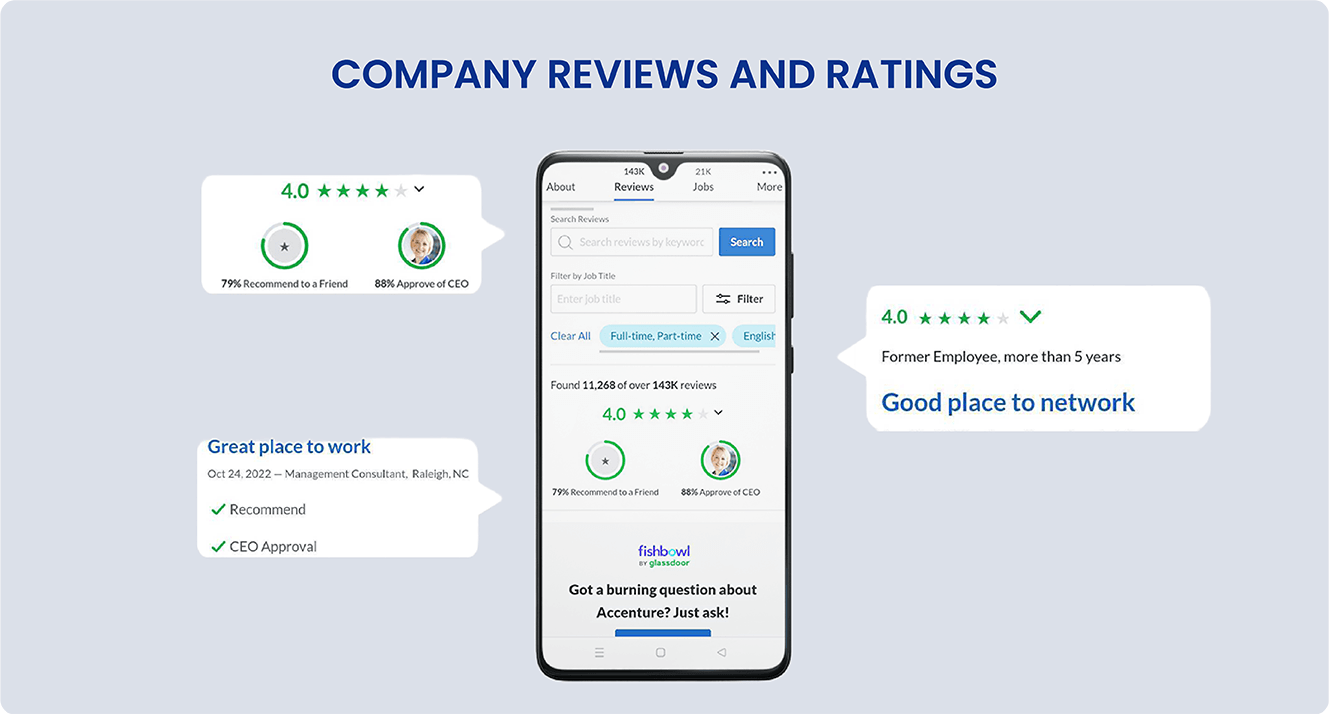
Glassdoor allows employees to rate and review their current and former companies anonymously. This tool gives job seekers useful information about a company’s culture, work environment, and management style.
2. Salary and Benefits Data
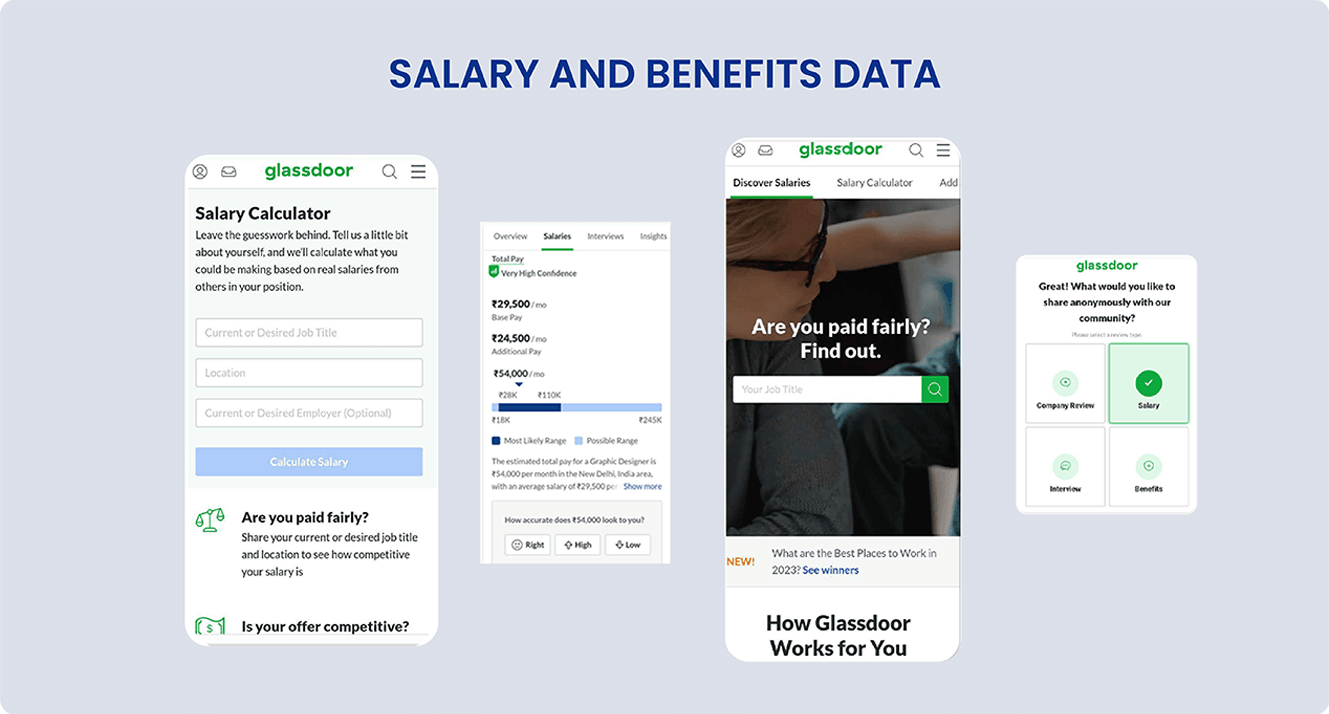
Glassdoor provides salary and benefits data for thousands of organisations based on employee feedback. This feature assists job seekers in understanding the earning potential and perks of a specific organisation or industry.
3. Job Search Alerts

Job seekers can set up alerts to receive emails when new job postings matching their search criteria are posted. This function saves time and makes it easy to keep track of relevant job opportunities.
4. Interview Questions and Reviews
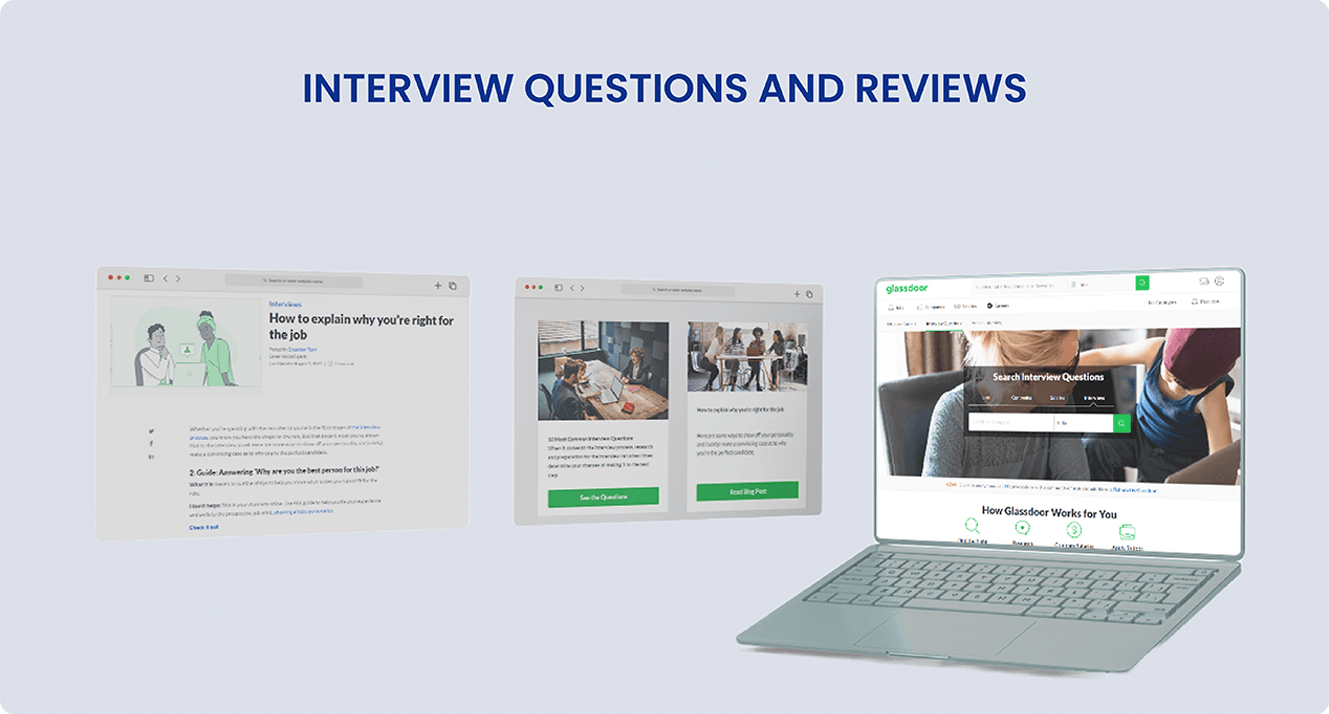
Glassdoor maintains a collection of interview questions and reviews based on real-world interviews. This tool can assist job seekers in preparing for interviews and gaining an understanding of what to expect.
Discover Job Portal Costs Like Glassdoor! Click for insights!

5. Career Advice and Resources
Glassdoor offers a multitude of career advice and resources, such as job search recommendations, resume and cover letter templates, and information on career routes and industries.
6. Diversity and Inclusion Ratings
Based on employee comments, Glassdoor assigns a diversity and inclusion rating to employers. This tool assists job seekers in identifying organisations that prioritise workplace diversity, equity, and inclusion.
Overall, Glassdoor is a complete job search platform that offers a variety of information and services to help job seekers discover the ideal job and employer. (Read more about Should Your Startup Choose a Web App or a Mobile App?)
Cost to Develop a Job Portal
Glassdoor and other job portal applications go through numerous stages before they are fully created and released to the market. The cost of each step varies according to the complexity of the app and the client’s needs. Let’s go over the various steps of developing a job portal app like Glassdoor, as well as the expected costs for each stage.

1. Discovery Stage
The discovery stage is the initial stage in the creation of a job portal app. This step entails investigating and analysing the client’s needs, as well as determining the project’s scope. The cost of this stage is determined on the app’s intricacy and the amount of research required. The discovery stage typically costs between $5,000 and $15,000.
2. Design Stage
The design step entails developing the app’s user interface and user experience. This stage is essential since the design of the app can decide its market success or failure. The cost of the design stage is determined by the app’s complexity and the number of design iterations necessary. The design stage costs between $15,000 and $30,000.
3. Development Stage
The development stage consists of the actual coding and programming of the app. This is the most time-consuming and expensive stage of the employment portal app development process. The cost of the development stage is determined by the app’s complexity and the amount of features necessary. The development stage typically costs between $50,000 and $200,000.
4. Testing Stage
The testing stage comprises checking the app for faults and malfunctions. This stage is crucial since it guarantees that the software works properly before it is released to the public. The cost of the testing stage is determined by the complexity of the app as well as the number of devices and platforms on which the app must be tested. The testing stage typically costs between $10,000 and $30,000.
5. Launch Stage
The launch step involves the actual release of the software to the market. This stage entails developing and implementing a marketing strategy to attract users to the app. The cost of the launch stage is determined by the client’s marketing budget. The launch stage typically costs between $10,000 and $50,000.
6. Maintenance Stage
The maintenance stage entails the app’s continuing maintenance and support. This stage is crucial because it ensures that the software continues to run properly and is compatible with the most recent technologies. The cost of the maintenance stage is determined on the app’s complexity and the level of assistance required. The maintenance stage typically costs between $10,000 and $50,000 per year.
Finally, creating a job portal app like Glassdoor entails numerous stages, each with its own cost. The entire cost of establishing a job portal app might range from $100,000 to $500,000, depending on the app’s complexity and the client’s requirements. Working with an experienced development team that can assist you through each stage of the development process and helps you keep costs under control is critical.
Explore our other insights!

How Can You Find Investors For Your Mobile App Startups?
How Can You Find Investors For Your Mobile App Startup? Starting a mobile app startup is an exciting
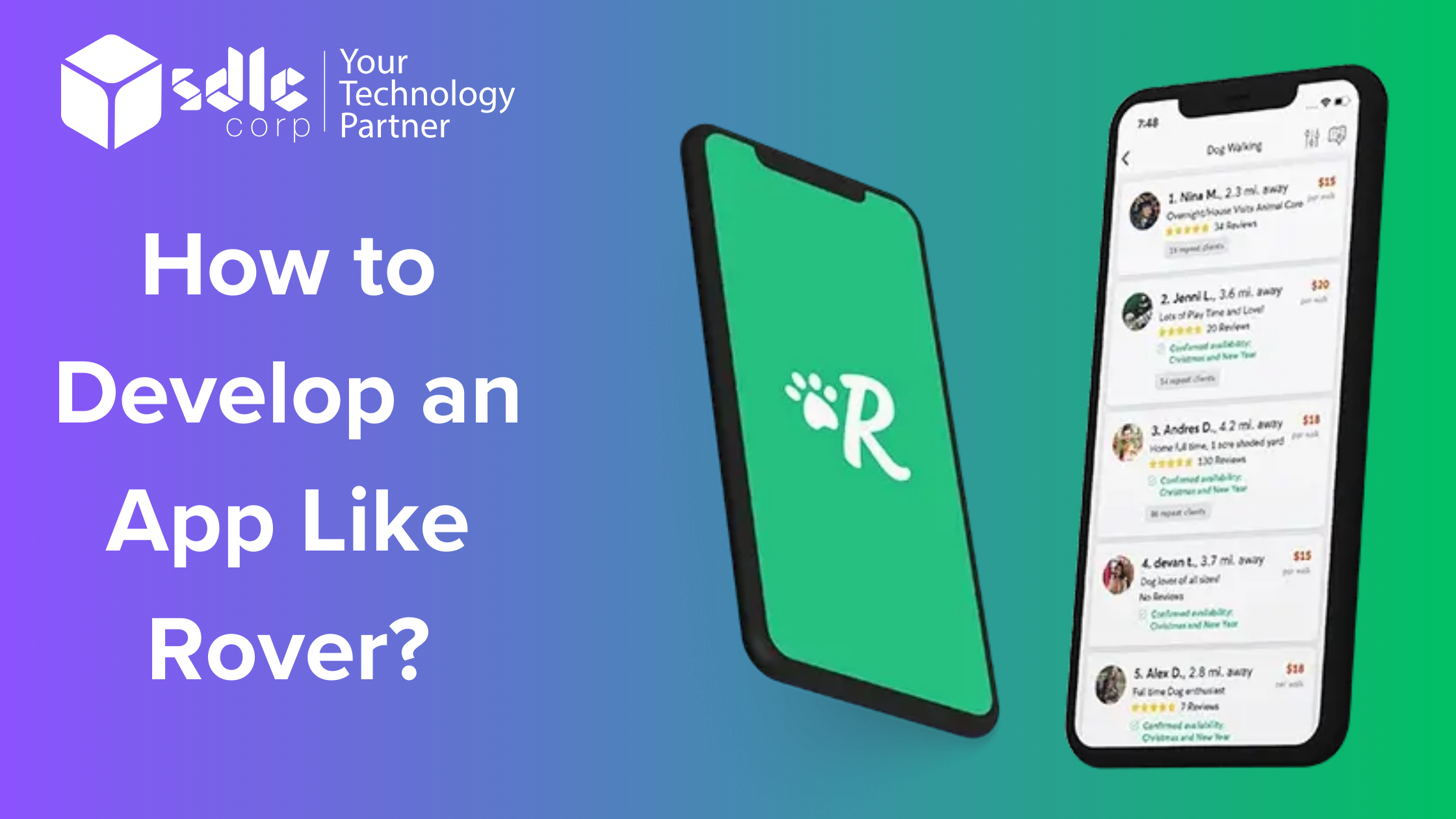
How to Develop an App Like Rover?
How to Develop an App Like Rover? Learn how to develop, build, and create an app like Rover,
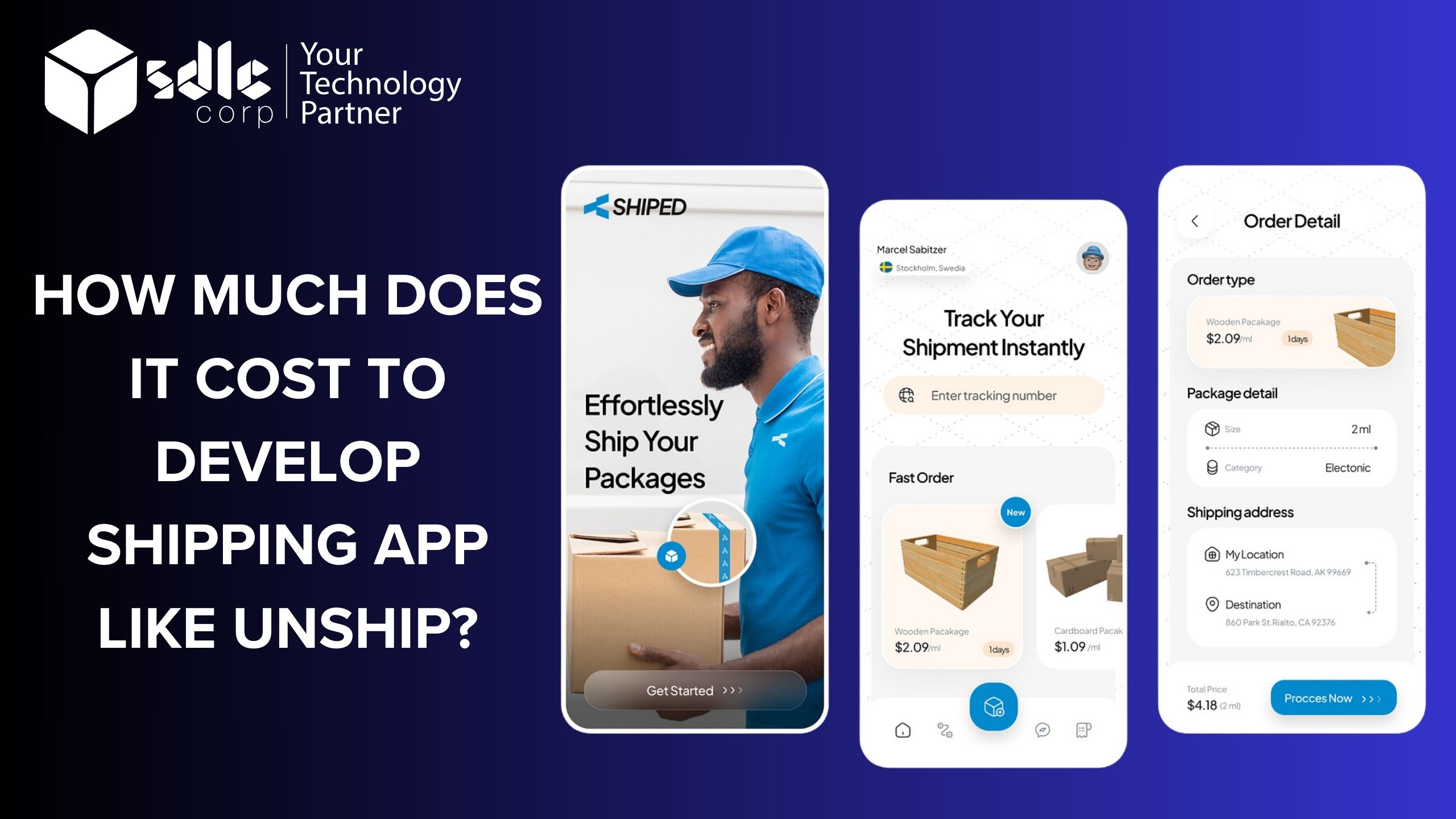
HOW MUCH DOES IT COST TO DEVELOP SHIPPING APP LIKE UNSHIP?
How Much Does It Cost To Develop Shipping App Like Unship? To develop a App like Unship, you’ll
Factors Influencing the Cost of Job Portals
Creating a job portal like Glassdoor may be a complex and costly process, driven by a variety of factors that must be examined to determine the project’s final cost. Some of the major factors influencing the cost of building a job portal like Glassdoor are as follows:
1. Platform and Technology
The technology used to construct the platform is an important variable influencing the cost of developing a job portal like Glassdoor. The technology used can have a considerable impact on the duration and expense of the development process. For example, establishing a job site from the ground up with bespoke coding can be more expensive than using pre-built frameworks or CMS like WordPress, which can assist to cut development expenses.
2. Design and Functionality
A job portal’s design and functionality are critical variables that influence user experience and engagement on the site. It can take time and resources to create an appealing and user-friendly interface. The cost of development is also affected by the intricacy of the design and features.
3. Features and Functionality
A job portal’s functionality can range from simple to comprehensive, including features such as job posting, resume upload, employer and job seeker profiles, job search, job alerts, and analytics. The higher the development cost of a job site, the more features it provides. Furthermore, new features like AI-powered matching algorithms, chatbots, and video interviewing can considerably boost development expenses.
4. Integration and Customization
Integrating third-party apps and services like social media and payment gateways, as well as customising the platform to match the specific demands of the business, can raise development costs.
Uncover Job Portal Costs Like Glassdoor! Click for insights!

5. Testing and Deployment
Testing and deployment of a job portal entail verifying that the platform works as planned and is bug-free. Depending on the complexity of the platform and features, this procedure can take a significant amount of time and resources.
6. Maintenance and Support
After deploying the job portal, regular maintenance and support are required to ensure that the platform functions smoothly, is up to date with security patches, and continues to satisfy the demands of users. These recurring costs should be accounted for in the overall development budget.
7. Legal and Regulatory Compliance
Creating a job portal necessitates adherence to a variety of legal and regulatory obligations, including data protection laws, labour laws, and tax rules. Compliance with these laws may have an impact on the cost of development.
Steps to Create a Job Portal Like Glassdoor
Creating a job site such as Glassdoor entails a series of processes that necessitate a well-defined plan and a qualified development team. Here are the detailed procedures for developing a job platform similar to Glassdoor:
Step 1: Conduct Market Research
Before developing a job portal, it is critical to undertake market research in order to understand the needs of both job searchers and employers. This research will assist you in determining which features should be included in your job portal.
Step 2: Define Your Target Audience
After conducting market research, you must define your job portal’s target audience. This will assist you in designing a user interface, features, and functionalities tailored to the target population.
Step 3: Plan the Architecture
Design the architecture of your employment portal based on market research and your target audience. This comprises the website’s layout, user interface design, and the functions that will be featured in the portal.
Step 4: Select a Technology Stack
Choose the best technological stack for your employment portal. This comprises the programming language, database, server, and other technologies to be used in the portal’s development.
Step 5: Develop the Features
Once the architecture and technology stack have been determined, the development team may begin working on the employment portal’s features. Registration and login, job search, job posts, company reviews, and salary information are examples of these functionalities.
Step 6: Ensure Data Privacy and Security
As a job site would hold sensitive data such as personal information and job preferences, it is critical to secure data privacy and security. To safeguard user data, use encryption techniques, two-factor authentication, and other security procedures.
Step 7: Test the Portal
Once the development is finished, test the job portal to confirm that it is working properly. To identify any problems, test the user interface, features, and functionalities.
Step 8: Launch the Portal
Launch the job portal after testing. To attract job seekers and employers, promote it through social media, email campaigns, and some other marketing strategies.
Step 9: Support and Maintenance
After launching the employment portal, provide regular support and maintenance to guarantee that it is running properly. This includes bug fixes, new feature additions, and responding to user comments.

Conclusion
Finally, developing a job portal similar to Glassdoor necessitates a major investment of time, money, and resources. The cost is determined by the features and functionalities required, the technology employed, and the location of the development team. A well-designed and functional employment portal, on the other hand, might be a valuable business opportunity in the long run, delivering value to both job seekers and employers. To assure the platform’s quality, security, and scalability, a professional development team must be hired.
FAQs
1. What is Glassdoor, and how does it work?
Glassdoor is an online platform where employees and employers may share information about jobs, wages, company evaluations, and interview questions. It also allows job seekers to instantly apply for job postings on the website.
2. What is the cost of creating a job portal similar to Glassdoor?
The cost of developing a job portal similar to Glassdoor is determined by various factors, including the features and functionalities, the technology employed, and the location of the development team. A basic job portal can range between $10,000 and $50,000, whilst a more advanced platform can cost $100,000 or more.
3. What are the essential features of a job portal?
Job listings, job search filters, employer profiles, candidate profiles, job application tracking, wage statistics, company evaluations, and interview questions should all be included in a job portal.
4. How much time does it take to develop a job portal like Glassdoor?
The development time for an employment portal comparable to Glassdoor can vary depending on the project’s complexity and scope. A basic platform can take 2-6 months to complete, whereas a more comprehensive portal can take a year or more.
5. Do I need to hire a professional development team to create a job portal?
Yes, developing a job site necessitates the collaboration of professional developers, designers, and project managers. To assure the platform’s quality, security, and scalability, it is advised that a professional development team be hired.

